#kerényi
Explore tagged Tumblr posts
Text

#movies#polls#rómeó és júlia#rómeó és júlia musical#romeo es julia#2000s movies#musicals#kerényi miklós gábor#attila dolhai#dóra szinetár#szilveszter szabó p.#bereczki zoltán#Árpád zsolt mészáros#requested#have you seen this movie poll
132 notes
·
View notes
Photo

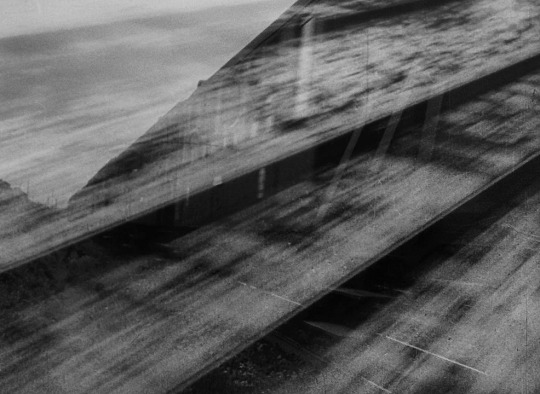
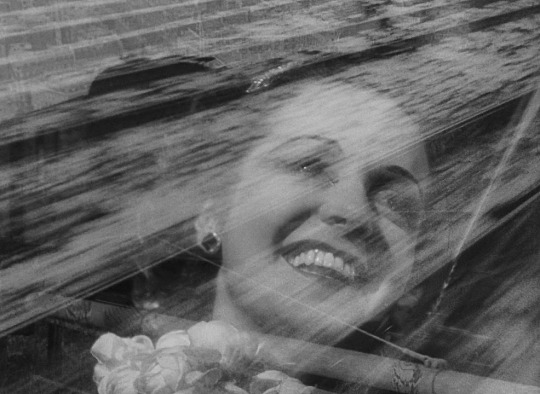



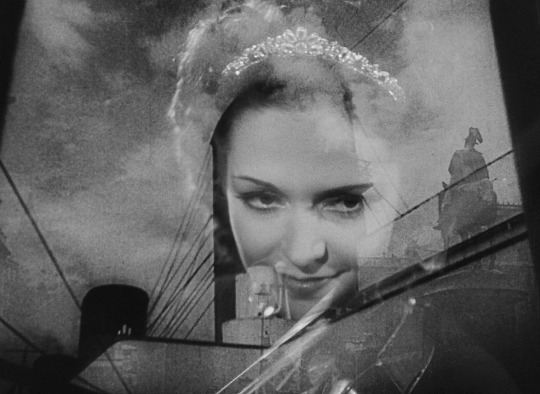


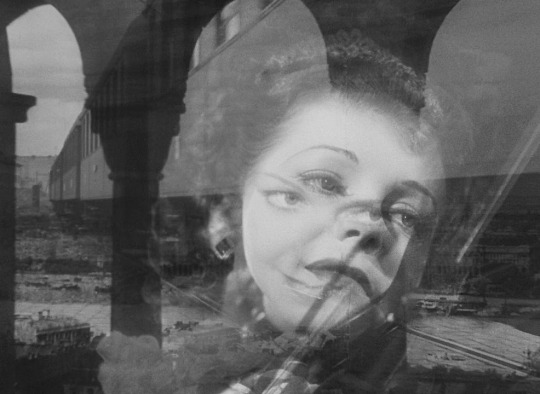
Two Girls on the Street (André De Toth, 1939).
#two girls on the street#andré de toth#két lány az utcán#bella bordy#károly vass#zoltán kerényi#márton vincze#gizella langermann
23 notes
·
View notes
Text





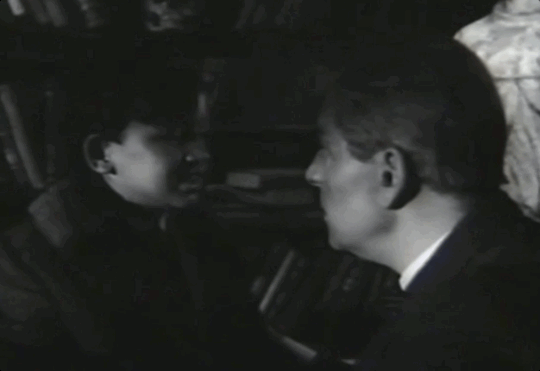

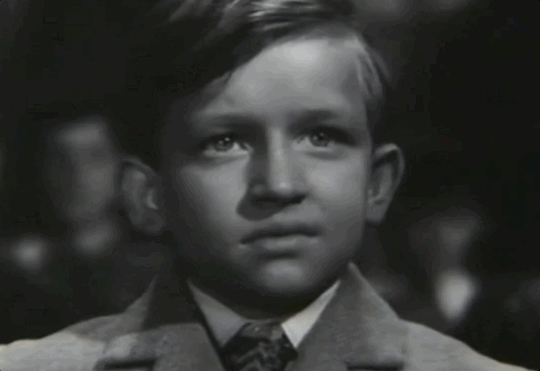
Puskák és galambok - 1961. Rendezte: Keleti Márton. Főszerepben: Tóth László, Kiss Antal, Kerényi Gábor, Bucsi István, Beke Zoltán, Benkő Gyula, Bessenyei Ferenc, Agárdi Gábor, Ráday Imre.
Magyar Filmek Ától Cettig Podcast: https://mfac.hu
#magyar#hungarian#film#movie#mfac#magyar filmek ától cettig#1961#puskák és galambok#keleti márton#retro#régi#tóth lászló#kiss antal#kerényi gábor#bucsi istván#beke zoltán#benkő gyula#bessenyei ferenc#agárdi gábor#ráday imre
6 notes
·
View notes
Text
Das archaische Lächeln # 3
Der blinde Schuster im finsteren Keller – sein Lächeln ist unbestimmt. Man sieht es nicht. Ein verlorenes Lächeln. Es braucht ein Gegenüber, dem sein mimischer Ausdruck gilt. Das strahlende Lächeln – die reine Freude am Anderen. Das milde Lächeln – ich verzeihe Dir, ich stehe darüber. Das gewinnende Lächeln nimmt für sich ein, schon abgleitend ins Geschäftsmäßige. Das falsche Lächeln ist nichts…

View On WordPress
0 notes
Text
Andrea Cavalletti: Kompozicijska manira Furija Jesija
ABDREA CAVALLETTI FILOSOFO, BOLOGNA, ITALIA, INTERVISTA 2019 Poput “mitoloških materijala” – Kerényi bi kazao “mitologija kao materijal [Stoff]” – konstrukcije nose u sebi indeks povijesti, jedinu i odlučujuću maniru u koju mogu korak po korak biti sakupljeni. Koga međutim interesira kompozicija kao takva, više negoli rekonstruirati predmnijevani “sadržaj” kutije, imat će uvijek na raspolaganju…
#Andrea Cavalletti#Furio Jesi i Károly Kerényi : Dva završna pisma iz prepiske#Ivan Molek#mitologija#teorija
0 notes
Text
Nem mondod
— Ilyen picin múlt, hogy elkéssek. A sofőr már csukta az ajtót, de a résen még be tudtam dugni a kezem, kénytelen volt kinyitni, és felszálltam a buszra. Különben nem értem volna ide a felvonulásodra. — Nem mondod.

View On WordPress
1 note
·
View note
Text
Jó véget ér a július!
#Anconai szerelmesek#Balatonakali#Balatonalmádi#Balatonfüred#Balatonfüred Kongresszusi Központ#Csárdáskirálynő#Keller János#Kerényi Imre Kult-Magtár#MÁZS#Mészáros Árpád Zsolt#Mézga család#musical#operett#Rátonyi Róbert Operettfesztivál#Szárnyal a kedv!#Vörösberény#Veszprém#Veszprémi Petőfi Színház#zenés darab#zenés est#zenés komédia
0 notes
Text
ἔγειρ᾿ φλογέας λάμπαδας ἐν χερσὶ τινάσσων,
Ἴακχ᾿, ὦ Ἴακχε,
νυκτέρου τελετῆς φωσφόρος ἀστήρ.
Awaken blazing torches, tossing them in your hands,
Iacchus, Iacchus,
Brilliant star of our nighttime rite!
[source]
or
Kindles the flaming torchers, brandishing one in each hand
Iakchos, O Iakchos!
The light-bringing star of the nocturnal mysteries.
[source: Dionysos Archetypal image of indestructible life by Carl Kerényi]
Φωσφόρος was used to refer to the planet Venus, the morning star, meaning "Light Bringer" or "Bearer of Light." and it was also related to the Sirius star, which is connected to Iakchos, a minor deity that appears related to a "double" of the Greek God Dionysos. In Carl Kerényi book, he builds a relation between both Iakchos and Dionysos in Chapter Three, section "Iakar and Iakchos."
0 notes
Text
epithets of aphrodite and venus i wasn't expecting

learning about her different epithets and found more than some that surprised me! prior to this, i knew that she had some aspects associated with war (aphrodite areia) and some that do not clearly align with our modern idea of a cisgender woman (venus calva, venus barbata, aphroditos). there were still several surprises in my search.
⋆。‧˚ʚ ɞ˚‧。⋆
disclaimer: i am using these posts to save my preliminary research. i’m a beginner to hellenic polytheism. this is not intended to teach but to share what i’ve learned. happy to take corrections!


─ aphrodite apaturia - 'the deceitful'
Ἀπατουρία ; comes from when she was attacked by giants and heracles came to her aid
─ aphrodite androphonos - 'the killer of men' (ἀνδροφόνος) in a similar vein is aphrodite androrophagos, 'the eater of men'
─ aphrodite tymborychos - 'the grave digger'
─ aphrodite epitymbidia - 'upon the graves'
(found this one here, when looking more into tymborychos, accredited to [james?] hillman)
─ aphrodite lykania - 'she - wolf'
Λύκαινα ; comes from an orphic hymn
─ aphrodite machanitis - 'skilled in inventing'
Μαχανιτις ; also a surname of zeus (her father) and athena. "... aphrodite [mechanitis] did not invent the language of love, but she protects it..."
─ aphrodite melainis - 'the black / dark one'
Μελαινις ... under which she was worshipped at corinth
─ venus felix - "lucky venus"
─ venus amica - "venus the friend"
((this one is so cute! and i wonder if it could be a hint as to her associations with friendship? or if it just calls her a friendly / helpful goddess to humans))
─ venus vitrix - "venus the victorious"
a romanised version of the armed aphrodite that was inherited from asia-minor '...venus could bring victory to a sulla or a caesar'


it's been so cool learning about aphrodite, venus, and all the different faces of the goddesses ⋆౨ৎ˚⟡˖ ࣪ are any of these new to you as well?
sources: theoi, this google doc, wikipedia for aphrodite and venus. i also sourced the gods of the greeks by c. kerényi

#hellenic polytheism#venus#aphrodite#aphrodite worship#lady aphrodite#aphrodite devotion#hellenic deities#hellenic polytheist#greek goddesses#greek gods#hermits-notes
11 notes
·
View notes
Text
Headcanons: Zagreus, The God
Who Zagreus is as a god is a complicated question, but one that boils down into a semi-simple answer: He is the god of blood, sweat, and tears. In other words, determination. This is gonna be broken into a few parts to avoid yapping so people can easily find the lore they're interested in.

1. Overview & Sources
2. Abilities
3. Personality / Alignment
4. Following
1. Overview & Sources Borrowing from his etymology first, I'm sourcing mostly from Dionysos by Karl Kerényi. A lot of what he is as depicted by SSG comes from that and I'm similarly drawing from those sources. There's other conflicting information out there such as some of the materials in the Greek Epic Fragments by Martin L. West, but I personally won't be referencing it since I don't believe much of that was sourced for his character in this specific portrayal. That said though, I do recommend people check it out regardless as there are some things in there that also seem to be the basis for what SSG establish (Such as some lines cited by Timothy Gantz). That said, I also borrow (what I can) from the Sisyphus epic as detailed in the Aeschylus, which you can find online under West as well. Mainly this pertains to not only his nature as the Son of Hades but also his specific function within the Underworld. My portrayal is kind of a mix of those sources, heavily inspired by the tones SSG set in their own interpretation of the mythology.
Because we don't actually know a lot about the historical Zagreus and some of the information is conflicting, especially regarding Orphic tradition and his relationship / identity with Dionysos, most of my portrayal is going to be a mix of filling in the blanks with my own narrative based off of (primarily) the sources given. There's a lot of mixup there regarding Zagreus and Dionysos that I won't really be touching for the purposes of this blog. That said, I strongly believe in being authentic and respecting the source material! If you know of any good sources. That said, if anyone has any ideas or thoughts regarding this please let me know some source materials I can go over!! Mediterranean history and mythology is something I'm going to try and respect and acknowledge, even if some liberties are taken for the sake of distinction. Comments should be open for this so if you've got sources, feel free to paste them below!
I'm using these two sources alongside the story established by SSG to sort of form my own narrative with Zagreus. That said, if anyone wants to read them I'll source them here!
Kerényi, C. (1976). Dionysos : Archetypal image of indestructible life. http://ci.nii.ac.jp/ncid/BA52740670
West, M. L. (1990). Studies in Aeschylus. In De Gruyter eBooks. https://doi.org/10.1515/9783110948066
2. Abilities.
Zagreus is Hades's son. He is undying, unable to die except by extremely unconventional means that would sever his link to the cycle of life and death itself. But that isn't to say he can't be killed. He is still partly, even if only by a small margin, mortal. This allows him to be vanquished by any conventional means that would otherwise kill a regular human. Even if he's a god, he bleeds. He can be bested.
'Zagre' has its roots with 'zoë' and 'zoön', the Greek words for 'life' and 'living thing' respectively. I take this to mean he can be killed as any living thing can, a narrative the game-play supports. Taking a 'Yes and' improve approach to that, I also feel like part of what makes him formidable however is his influence over the blood of living things. This can extend to the ability manipulate the blood in an individual's body to a number of effects, such as making wounds that never heal on their own or stop bleeding. This would reflect the casting ability he has, and possibly was even one of the sources of inspiration for SSG in regards to that mechanic. Secondly, taking that prescient I'd like to think he could also control the flow of blood in a living creature to varrying effects. Heightening senses, accelerating heart-rate, even using the blood of living things to heal himself. But nothing on the level of say, water bending. His power is a lot more subtle than that.
Additionally, his name (and even Artemis in game) suggests he's a fantastic hunter. And that, I think, is where much of his actual formidability comes from. An exact translation of his name would be something like, 'catcher of game' and I think that's appropriate. He is a fighter trained by Achillies and a hunter favored by Artemis that cannot die. What makes him frightening as an enemy is the fact that, no matter what you do, he's just going to come back. And every time he does, he gets a little bit better at fighting you. And that should be terrifying, were it not the fact that Zagreus can be reasoned with. It would be a nightmare if you couldn't avoid him simply by laying down your weapon and engaging in a dialog. In as much a way that he is a god and an unstoppable force, he is still his own individual with principles. Among said principles is mercy, understanding, and compassion.
But to those that don't heed that? Zagreus is and should be frightening. Because he is stubborn. In that way he is Hades' son. And he will never stop until one day, eventually, he bests them. It isn't a matter of 'if', but when.
3. Personality / Alignment
As a god, Zagreus is... Fairly outgoing. He doesn't believe himself above anyone else, living or dead. In much the same way his name derives from 'living things', he's very compassionate towards mortals and doesn't place himself on a pedestal regarding them. If anything, he views his power as a god as a responsibility, a trait his Father instilled in him after much effort. In this way, he uses his power and influence as a god in service of the living despite being a chthonic god of the Underworld. But from a distance. He knows that power can corrupt, and his influence carries weight among the mortals that acknowledge him. So he prefers to be more of a distant but dedicated figure, one who only intervenes when inaction would be detrimental to all parties involved. Including his conscious.
For the same reason, he doesn't to reveal his nature as a god too often to those that don't already know. He understands that others might perceive him differently as just another being with their own agenda and morality if they view him through the lens of a god. They might think because he is a god and thinks these things, his opinion should be held with more regard than somebody else's. And Zagreus just doesn't believe in that. And more than that, it often introduces a power dynamic he simply isn't comfortable with in most instances.
4. Worship Zagreus is often misunderstood by mortals. Often, they see that him and Ares are close and, considering his affiliation with blood, make him out to be somewhat more of a sacrificial deity than he is. Mostly they perceive that he's the good of blood without contextualizing that he's more than that in a literal sense. Zagreus's domain more subtle, less 'blood and conflict' as it is 'blood sweat and tears'. He's portrayed as a stubborn, defiant, persistent and I'm inclined to believe he's the of god of effort and 'bleeding for your passions' so to speak.
While this does have relationships with conflict and battle, as you would naturally expect, it's hardly what he represents on the whole. In regards to most of the people that follow him, he almost has this bitter and hesitant relationship. He doesn't necessarily endorse the collection of people who see him as a sort of god of passionate violence and bloodshed which. Is only a partial truth, and one he isn't fond of.
Ironically, a lot of the times the mortals he actually admires don't' even worship him at all. To an extent, Zagreus actually prefers this. He doesn't seek worship. So when people actually come around and understand him and pray that fit that niche of being stubborn and passionate people who bleed for their convictions and invoke his name? He's' probably one of the easiest gods to talk to individually, as well as work with on a practical level due to his compassion and natural intuition.
#| headcanons. |#| headcanon 01: divinity. |#WHEW word vomit I'm so sorry#my autism won the battle there#anyway I've been rambling to people about zagreus as a god so there it is#the definitive post that I will absolutely add to as time goes on
14 notes
·
View notes
Photo


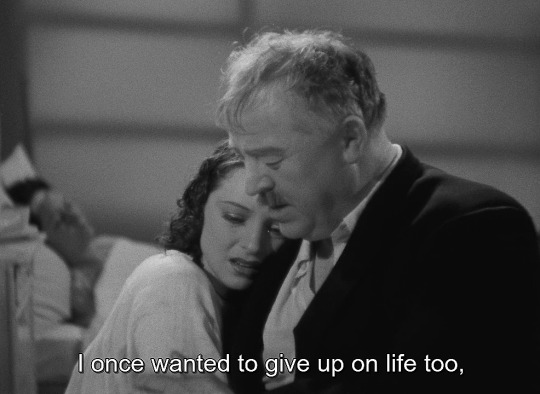
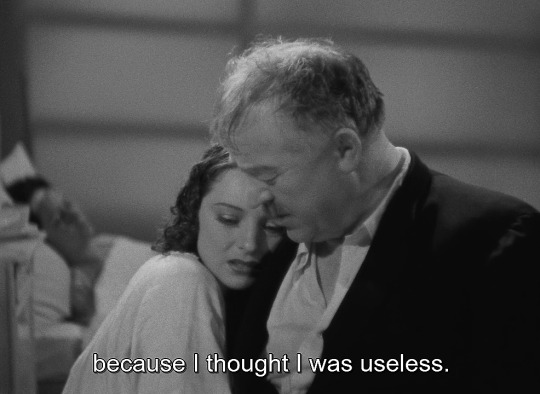
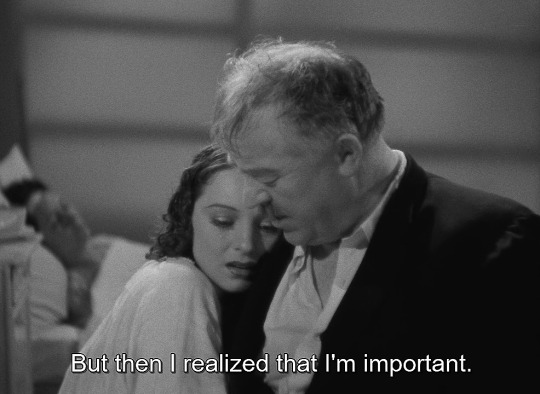
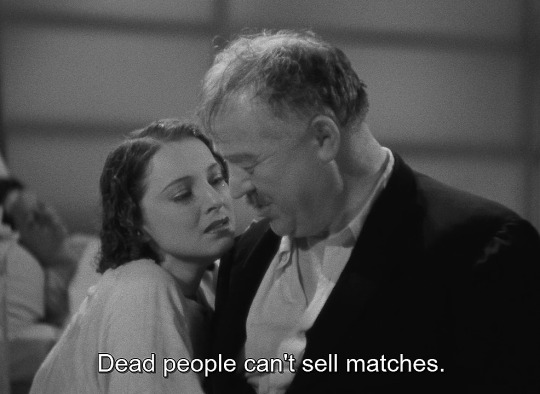
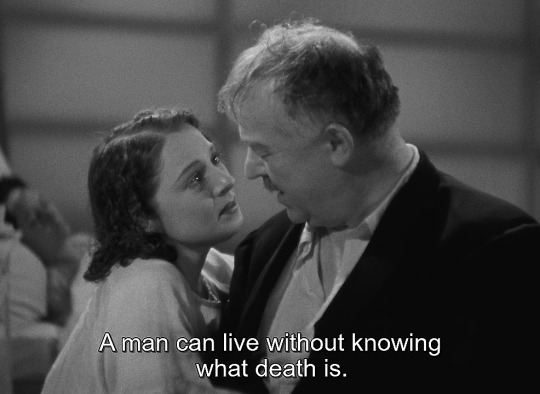

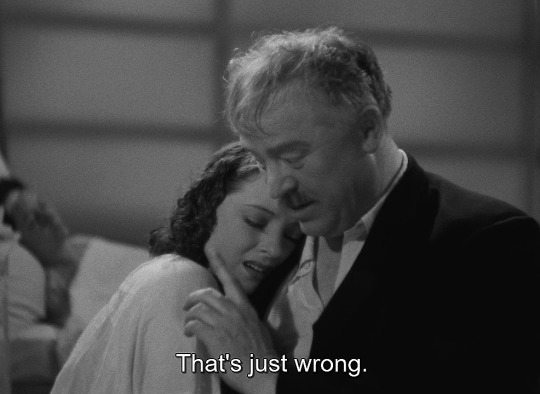
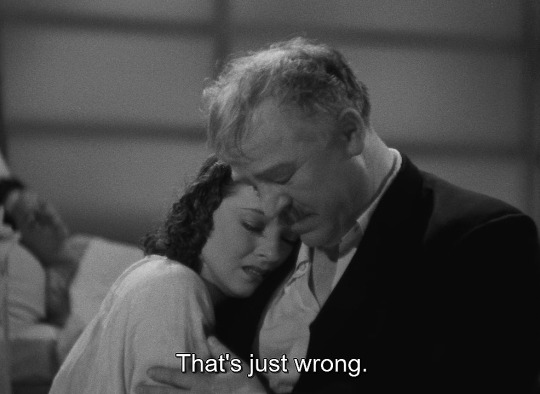
Two Girls on the Street (André De Toth, 1939).
#two girls on the street#andré de toth#két lány az utcán#bella bordy#károly vass#zoltán kerényi#márton vincze#gizella langermann
19 notes
·
View notes
Text

Que toute la civilisation moderne ait un caractère essentiellement anti-aristocratique sur le plan politique et social est évident. Mais on peut en dire autant pour d'autres domaines : le domaine spirituel, la culture et la vision de la vie, bien que l'orientation anti-aristocratique soit ici plus difficile à saisir, les points de référence indispensables ayant été presque totalement oubliés.
Nous voudrions maintenant mettre en relief un aspect particulier de la situation, en rapport avec l'avènement de l'« humanisme ». Nous employons ce terme au sens large, non au sens de l'humanisme historique apparu pendant la Renaissance, bien que cet humanisme ait représenté un tournant fondamental sur le plan dont nous parlons. Par « humanisme », nous entendons par conséquent une vision globale tout entière centrée sur l'homme, sur la condition humaine, ce qui est humain devenant alors l'objet d'un culte, pour ne pas dire d'un véritable fétichisme. Mais nous n'envisagerons pas les formes les plus basses de ce culte, comme par exemple l'« humanisme marxiste » et l'« humanisme du travail » ; nous tournerons au contraire notre attention vers les formes qui se rattachent à la « vision tragique de la vie » et sur leur propension à reconnaître une grande valeur humaine à des personnages révoltés et subversifs de l'histoire et du mythe, et à se ranger aussi à leurs côtés. C'est là, en effet, le versant idéal et romantique des idéologies révolutionnaires, plébéiennes et subversives de notre époque.
Selon une certaine mentalité, être homme, et seulement homme, serait une gloire. Tout ce que la condition humaine contient de misérable, de sombre, de douloureux, de déchirant est appelé « tragique » et, en tant que tel et conformément aux prémisses, se trouve donc exalté. Le prototype de l'esprit humain avec toute sa « noblesse », on le découvre chez le rebelle qui s'est révolté contre les forces supérieures, chez le titan : Prométhée.
On parle aussi d'« œuvres profondément humaines », de « conscience humaine », de « sentiment humain vrai et profond ». On admire la « grandeur tragique » d'une existence, ou le visage illuminé par une « tragédie intérieure » ; on célèbre enfin l'« esprit prométhéen », le « noble esprit de révolte », le « titanisme de la volonté », et ainsi de suite. Cela peut même aller jusqu'à l'hymne à Satan de Carducci et à certaines variantes du culte de Faust. C'est là un jargon courant chez les intellectuels et les lettrés partisans d'une philosophie historiciste et progressiste plus ou moins héritière des Lumières. De ce jargon, il semble que personne n'ait perçu le ridicule ni la rhétorique, et l'on est même tombé encore un peu plus bas avec l'« humanisme intégral », collectiviste, matérialiste et marxiste, lequel s'empressa de liquider ces superstructures pour prôner une mystique de la bête de somme et de production. On est ici en présence d'indices précis sur le caractère spirituellement anti-aristocratique d'une vision typiquement moderne de la vie.
Pour prendre vraiment conscience de cette chute de niveau, on peut se référer à l'Antiquité, à des aspects, des mythes et des symboles spécifiques de ce monde, pourvu qu'on sache les interpréter justement, et non sous la forme faussée ou insignifiante qui nous en est donnée par les recherches les plus courantes. Dans cette optique, il ne sera pas inutile de commenter ce que K. Kerényi a écrit dans son ouvrage Les orientations fondamentales de la religion antique, sur la signification de Prométhée et sur l'esprit des Titans.
À titre préliminaire, deux choses sont bien mises en relief. La première, c'est que l'ancien monde classique ignora, sous ses formes les plus élevées et originelles, la « foi » au sens courant du terme, sa religiosité reposant essentiellement sur la certitude de la réalité et de la présence effective des forces divines. « La foi présuppose le doute et l'ignorance, que l'on surmonte précisément par la croyance ». La « foi » ne joua pas un rôle important dans la vision de la vie de l'homme antique parce que la certitude de l'existence des forces divines faisait partie de son expérience et de sa vie aussi naturellement et directement que, sur leur plan, les données du monde sensible. C'est pour cette raison — remarquons-le au passage — qu'on encourage des confusions très regrettables lorsque le terme « religion », pris dans son sens devenu courant surtout dans la sphère chrétienne, dont le centre est la foi, est appliqué aveuglément à la spiritualité antique et, d'une manière plus générale, à la spiritualité des origines. On peut à ce sujet se référer à ce que nous avons déjà dit sur le « mythe » traditionnel et à ce que nous dirons plus loin sur la définition de l'initiation.
La seconde chose concerne l'idée d'une unité originelle des dieux et des hommes. « Les dieux et les hommes ont la même origine », enseigne Hésiode, et Pindare le répète. Deux races, mais un même « sang ». En présence des forces divines, l'initié orphique dit : « Céleste est ma race, et vous aussi le savez ». On pourrait énumérer de nombreux témoignages analogues. Même dans les Évangiles, qui baignent pourtant dans une atmosphère radicalement différente de celle de la Grèce, on trouve la parole « Vous êtes des dieux ».
Les dieux regardent les hommes, sont présents dans leurs fêtes et leurs banquets rituels — Rome connut la cérémonie caractéristique du lectisterne —, les dieux apparaissent, siègent auprès des hommes, et ainsi de suite : mais dans le monde antique, ces images ne furent pas de simples fantaisies. Elles attestent à leur façon, de manière figurative, la certitude que les hommes vivent avec les dieux. Elles sont les traces d'une condition existentielle bien précise.
Il ne s'agit donc pas ici de « mysticisme ». Kerényi écrit : « À partir d'Homère et d'Hésiode, cette forme absolue d'un "vivre avec les dieux" non mystique peut être définie ainsi : être assis ensemble, se sentir et savoir qu'on se regarde dans l'état originel de l'existence ». Kerényi parle d'un état originel de l'existence en raison de l'antiquité très reculée des témoignages à travers lesquels s'exprima ce sentiment vécu.
Au cours des temps, ce sentiment s'affaiblit, il dut être réactivé par des actes cultuels particuliers, pour ne plus subsister que de façon sporadique à la fin. Homère dit déjà que la vivante présence des dieux, comme dans l'état originel, n'est expérimentée que par certains peuples, « dont l'existence oscille entre la divinité et l'humanité, et qui sont même plus proches des dieux que des hommes ».
On ne doit pas songer obligatoirement à des races d'une antiquité mystique. Nous trouvons encore dans la Rome antique des témoignages précis et significatifs. On peut rappeler la figure du flamine de Jupiter (flamen dialis), qui fut considéré comme une « statue vivante » de la divinité olympienne, et la description, par Livius, de certains personnages de l'époque de l'invasion des Gaules, « plus semblables à des dieux qu'à des hommes » : praeter ornatium habitumque humanum augustiorem, maiestate etiam… simillimos diis. César lui-même, qui se présente aux yeux de la plupart des gens sous les traits profanes du « dictateur » et du conquérant quasiment napoléonien, est aussi celui que décrit Suétone : celui qui, dans sa jeunesse, affirma que sa lignée possédait « la majesté des rois et le sacré des dieux, dans la puissance desquels se tiennent aussi ceux qui sont des dominateurs d'hommes ». Jusque dans le chaos du Bas-Empire subsistèrent des idées et des coutumes qui, tels des éclairs troubles, renvoient à ce sentiment naturel de la présence des dieux.
« Des peuples, dont l'existence oscille entre la divinité et l'humanité » — là est l'important. Après ce stade, les vocations devaient se séparer. Et ce qui devait arriver arriva : celui qui oscillait entre la divinité et l'humanité finit par se décider pour la seconde et par s'en vanter. L'homme ne s'aperçut pas de cette chute implicite, ni du rire des dieux. C'est de cela que parle Kerényi dans ses considérations sur la façon dont l'Antiquité, originellement, comprit l'esprit des Titans.
Hésiode définit très clairement cet esprit à travers les épithètes qu'il attribue à Prométhée : toutes sont des désignations de l'esprit actif, inventif, astucieux, qui veut tromper le noûs de Zeus, c'est-à-dire l'esprit olympien. Mais celui-ci ne peut être trompé ni ébranlé.
Il est ferme et tranquille comme un miroir, il dévoile tout sans chercher, c'est au contraire le Tout qui se dévoile en lui. L'esprit titanique, en revanche, est inquiet, inventif, toujours en quête de quelque chose, avec son astuce et son flair. L'objet de l'esprit olympien, c'est le réel, ce qui est tel qu'il ne peut pas être autrement, l'être. L'objet de l'esprit titanique, par contre, c'est l'invention, même s'il s'agit uniquement d'un mensonge bien construit.
Les expressions employées par Kerényi méritent d'être rapportées ici. À l'esprit olympien correspond l'alêtheia, c'est-à-dire le non-être-caché (terme qui, en grec, désigne la vérité), alors que l'esprit titanique aime ce qui est « tordu », car « tordu » (skoliós) est, de par sa nature, le mensonge, de même qu'est « tordue » aussi une invention intelligente, comme par exemple le lasso, le nœud coulant (brochós). La contrepartie naturelle de l'esprit olympien, du noûs, c'est la transparence de l'être ; quand le noûs disparaît, l'être demeure, mais dans sa réalité aveuglante. La contrepartie naturelle de l'esprit titanique, c'est en revanche la misère spirituelle : stupidité, imprudence, maladresse. Chaque invention de Prométhée n'apporte au monde qu'une misère de plus infligée à l'humanité ; après le sacrifice réussi (sacrifice par lequel Prométhée a cherché à tromper l'esprit olympien), Zeus reprend aux mortels le feu. Et quand après le vol du feu, Prométhée est enlevé à l'humanité pour endurer sa peine, il ne reste qu'Épiméthée pour représenter la race des hommes : à la place de l'astucieux ne reste donc — comme son ombre — que le stupide.
L'affinité qui unit en profondeur ces deux personnages du mythe grec s'exprime par le fait qu'ils sont frères. On pourrait presque dire qu'« un être unique et originel, astucieux et stupide à la fois, semble ici dédoublé sous la forme de deux frères inégaux ». Prométhée est l'astucieux, le prévoyant, Épiméthée celui qui réfléchit trop tard. Imprudent, celui-ci acceptera le don des dieux, la femme, dernière et inépuisable source de misère pour l'humanité. Et Zeus — si l'on en croit Hésiode qui raconte le dernier et décisif épisode de la lutte entre les deux esprits — Zeus, sachant que les hommes se réjouiront de ce don et aimeront leur propre malheur, Zeus rit.
Voilà ce que rapporte Kerényi. Ce rire est la vraie défaite du titan et du prévaricateur. Kerényi fait bien ressortir cette idée fondamentale du monde antique : le rire des Olympiens est meurtrier. Mais personne à proprement parler ne meurt, rien n'est changé dans l'être humain plein de contradictions, et dont les représentants sont, à un même titre, Prométhée et Épiméthée. Qu'est-ce qui est donc détruit par ce rire ? C'est l'importance même de la misère des Titans, leur soi-disant tragédie. Devant Zeus, le spectateur qui rit, l'éternelle race des hommes joue son éternelle comédie humaine.
Même quand un élément héroïque intervient, rien ne change dans cette situation, dans ce rapport de valeurs. Kerényi le montre très bien. Dans l'antique conception du monde, le fond originel et titanique de l'homme, d'une part, le rire des dieux, de l'autre, sont intimement liés. L'existence humaine, en tant qu'elle reste totalement prisonnière de ce fond originel, est misère et, du point de vue olympien, ridicule, sans importance. Lorsque les actions humaines se hissent au niveau de l'épopée, cette signification n'en est que confirmée. Selon la vision antique, la gravité des discordes et des tensions, des luttes et des massacres de la malheureuse race des hommes autrefois frères des dieux, peut même avoir des résonances cosmiques. Précisément pour mettre en relief la grandeur de cette tragédie, Homère admet que la nature, par des prodiges, brise ses propres lois et y participe. Tout semble concourir à accroître la tragique importance du héros.
Et pourtant, selon le point de vue de la spiritualité antique auquel nous nous référons, selon ce qu'on pourrait appeler le point de vue de « l'état originel de l'existence », vécu avant la consolidation du mirage humain et prométhéen — pourtant, tout cela fait mouvoir et trompe aussi peu le noûs, l'esprit olympien, que ne l'avait fait l'astuce des Titans. Kerényi dit que la seule illusion admissible par la conception antique dans les rapports entre l'homme et le divin était la tragique importance de l'existence héroïque comme spectacle de choix pour les dieux (ce que Sénèque affirmera aussi plus d'une fois). Mais le côté le plus tragique de cette importance même, c'est que, tant que l'œil spirituel du héros tragique ne s'est pas complètement ouvert, tout doit s'annuler, s'anéantir devant un rire divin. Car ce rire n'est pas, comme on pourrait le penser selon une perspective humaine, le rire d'une « béatitude absolue » et creuse, mais la marque d'une plénitude existentielle ; c'est le rire de formes éternelles.
Telle fut, aurait dit Nietzsche, qui était pourtant lui-même, à plus d'un titre, une victime du mirage titanique, telle fut la profondeur de l'âme antique et classique.
Tout cela dans le domaine mythologique. Mais la mythologie n'est pas imagination délirante. Dans ce contexte, et si l'on met à part ce que nous avons dit dans un précédent chapitre sur ses autres dimensions possibles, métaphysiques, intemporelles, le mythe est « le miroir des expériences d'une race à la lumière de sa religiosité » (Bachofen). Il nous fait connaître les forces profondes qui agirent sur la formation des civilisations. Les idées évoquées ici suggèrent deux directions, et donc une autre possibilité que celle dont le mythe de Prométhée et des Titans, tel qu'il a été repris par l'humanisme, est l'expression.
Le cadre mythologique — Zeus, les dieux, les parentés divines, etc. — ne doit pas voiler l'essentiel en donnant éventuellement une impression d'étrangeté fantastique et d'anachronisme. En principe, l'esprit a toujours la possibilité de s'orienter selon l'une ou l'autre des deux conceptions opposées et d'en tirer une mesure et même un « fond musical » pour toute l'existence. L'orientation « olympienne » est possible, tout autant que l'orientation prométhéenne, et peut se traduire, abstraction faite des symboles et des mythèmes antiques, dans une manière d'être, dans une attitude précise devant les vicissitudes intérieures et extérieures, devant l'univers des hommes et le monde spirituel, devant l'histoire et la pensée.
Cette orientation joue un rôle essentiel dans tout ce qui est vraiment aristocratique, tandis que l'orientation prométhéenne possède un caractère fondamentalement plébéien et ne peut connaître, au mieux, que le plaisir de l'usurpation. Dans le monde antique, non seulement gréco-romain, mais plus généralement indo-européen, toutes les divinités principales de la souveraineté, de l'imperium, de l'ordre, de la loi et du droit, présentent des traits foncièrement olympiens. En revanche, l'affirmation historique de l'orientation prométhéenne a entretenu des rapports étroits avec tout ce qui a agi dans le sens d'une attaque contre toute forme d'autorité légitime, avec la tendance à y substituer abusivement des principes et des valeurs liés aux couches les plus basses de l'organisme social, dont la correspondance chez l'individu — nous l'avons déjà mis en évidence à plusieurs reprises dans les chapitres précédents — est précisément sa partie « physique », purement humaine.
D'une manière générale, avec l'avènement de l'humanisme et du prométhéisme, il a fallu choisir entre la liberté du souverain et celle du rebelle, et l'on a choisi la seconde. Telle est la vérité, même quand on a le culot de célébrer l'affirmation de la personnalité humaine et sa « dignité », la liberté de pensée, l'« infinité » de l'esprit.
Du reste, ce choix électif et révélateur est bien visible même sous les formes les plus triviales de l'idéologie révolutionnaire. Admettons un instant que les hiérarchies traditionnelles aient vraiment eu le caractère supposé par cette idéologie ; admettons qu'elles n'aient pas reposé sur une autorité naturelle ni sur la libre reconnaissance de celle-ci mais exclusivement sur la force ; admettons enfin que, dans le « sombre Moyen Âge » par exemple, l'homme et la pensée humaine aient souffert dans les chaînes de l'oppression politique et spirituelle. Mais dans la personne de
qui souffrirent-ils ? Certainement pas dans la peau des despotes présumés, de ceux qui administraient le dogme et, en général, de ceux qui, selon la parole d'Aristote, dictaient la loi mais n'étaient pas eux-mêmes soumis à la loi. Ceux-là étaient des êtres libres. Ainsi, même sur ce plan, on voit quel est le sens caché des « nobles idéaux » libertaires et des affinités électives qui s'y rapportent : c'est l'identification instinctive non avec ce qui est en haut mais avec ce qui est en bas, c'est l'aspiration non à la liberté du Maître mais à celle de l'esclave affranchi (en admettant qu'on puisse parler d'« esclaves » au sens péjoratif et faussé d'aujourd'hui pour l'époque en question). Quand bien même il faudrait accepter une telle image matérialiste, unilatérale et pour une large part imaginaire des sociétés hiérarchiques, le fond plébéien du prométhéisme social, la « qualité » de ses affinités électives, la « race de l'esprit » qui s'y trahit, sont immédiatement reconnaissables.
En dernière analyse, les choses ne changent guère, si l'on passe au domaine culturel, où l'humanisme et le prométhéisme ont célébré l'émancipation de la pensée, glorifié l'esprit qui « a brisé toute chaîne pour devenir conscient de son incoercible liberté » à travers le rationalisme, l'humanisme et le progressisme, avec éventuellement à l'horizon la « vision tragique de la vie » et le mythe du Prométhée artisan, avec le mirage des « conquêtes de la pensée », notamment de la pensée qui invente, construit, découvre, de la pensée appliquée propre à l'antique Titan, ingénieux et inquiet.
C'est là tout un mouvement qui, partant du bas, a mené au déclin ou à la destruction de ce qui en Occident, dans son histoire et sa civilisation, pouvait encore appartenir au pôle opposé, apollinien et aristocratique, de l'esprit, c'est-à-dire à la souveraineté des hommes qui regardent ce qui est humain avec distance, des hommes qui ont pour idéal la « civilisation de l'être » (cf. chapitre I), des hommes qui, dans leur vie et leur action, témoignent du supra-monde et de sa calme puissance qui ignore le tragique.
L'involution s'accélérant, l'« humanisme » devait parcourir la voie qui conduit, pour reprendre les symboles rappelés plus haut, de Prométhée à Épiméthée. Le monde moderne d'aujourd'hui ne connaît pas le Prométhée délivré au sens positif, le Prométhée libéré grâce à Héraklès (celui-ci, pour les Anciens, désigna l'homme véritable, le héros qui a fait l'autre choix, qui a décidé d'être un allié des forces olympiennes). Il ne connaît que le Prométhée auquel on a enlevé ses chaînes et qui a été laissé libre de suivre sa voie pour se glorifier de sa misère et de la tragédie d'une existence purement humaine — ou, mieux, de l'existence considérée d'un regard purement humain —, pour en arriver enfin au point où, dégoûté de cette sorte d'auto-sadisme qu'est sa « grandeur tragique », il se précipite dans l'existence stupide de l'humanité « épiméthéenne ». Une existence qui se déroule au milieu du splendide et titanesque spectacle de toutes les conquêtes humaines de ces derniers temps, mais qui ne se consacre plus qu'au travail des bêtes de somme et à l'économie devenue obsessionnelle. La formule employée par une idéologie bien connue, c'est précisément l'« humanisme intégral » compris comme « humanisme du travail » et « sens de l'histoire ». Aucun doute n'est possible : le cycle se ferme.
Julius Evola, L'Arc et la Massue, Chapitre 10
3 notes
·
View notes
Note
If this blog is still active, first off hello! I love your stuff with Artemis and Apollo. Second, where have you gotten your interpretation of them from? You said in older posts that you’ve done research on them. What have you read and where have you read it?
Oh, hello back! Let me start by saying that I truly appreciate your support and interest! This has always been (and with "always" I sadly mean literally, since classical times) mostly a niche topic, but so dear to my heart I'm always delighted to see people falling, well, prey to it (figuratively or less figuratively lol).
This said, I'm afraid your question has no simple, definite answer. As uncomplicated as it might sound, I'm afraid my interpretation is simply my own, formed over almost a lifetime. I've studied the Classics (especially ancient mythologies, in both official and unofficial settings) all my life. I actually still do - and daily. I'm mostly kept together by ancient terrors and obscure palpitating riddles, so, I admit, I might know a thing or two about topics not many other scholars find it fashionable to rave about.
So, disappointing as I'm sure I'm about to sound, there exists no actual text solely focused on the topic of the Divine Twins and their relationship seen under the lenses I usually talk about. I've actually always been tempted to write one myself for this precise reason.
The best advice I can give you is to actually start studying Greek Mythology for yourself (and compare it with other ancient religions, this part is crucial) and try to connect the dots for yourself.
Those are some great volumes to start: Gods and Heroes of the Greeks, Karl Kerényi / The Greek Myths, Robert Graves (Graves was a genius, but he gave more gravity to his own interpretations than to supported facts, so always read him with a grain of salt) / The Greeks and the Irrational, Dodds / The Gods and Goddesses of Old Europe, Marija Gimbutas.
#hope you'll find this helpful#and yes - this blog is and always will be very much alive lol#even if sometimes life make it go on periods of hiatus#minaim-blog#asks/replies#artemis and apollo#mythology#greek mythology#swans and claws#one and one thousand stories lis told
5 notes
·
View notes
Text
Furio Jesi i Károly Kerényi : Dva završna pisma iz prepiske
Kerényi Jesiju, 14. 3. 1968. Dragi Jesi, htjeli biste biti umireni u vezi činjenice jesam li primio od Vašeg izdavača Vaš sveščić Književnost i mit. Ne mogu Vas umiriti premda ovo zbirka Vaših tekstova napisanih proteklih godina od kojih su mi mnogi dobro poznati. Sada sam međutim po prvi put pročitao Vaš esej Cesare Pavese, mit i znanost o mitu. Niste mi ga poslali kada je bio objavljen u…
#Furio Jesi i Károly Kerényi : Dva završna pisma iz prepiske#Ivan Molek#Károly Kerényi#književnost i mit#kultura
0 notes
Text
Tökéletes Állat – Premieren a Csináltadmár Rabbival? első lemeze - Lángoló
„A Csináltad Már Rabbival? zenekar nevét úgy kell írni, hogy Csináltadmár Rabbival?, de mindig elbasszuk. Őszintétlen, vajpuha punkzenét játszunk, ami inkább posztnoise-sárgametál-ambient, de annak semmi értelme. Bármit tervezel, meg se próbáld, mert mi már túl vagyunk rajta. Nekünk már a kurva jövő is csak déja vu. A zenekar tagjairól annyit, hogy még sohasem sikerült megszámolni, hányan vagyunk, mert minden próbán mások az arcok, odajön valaki, belegitározik, a nevét sem tudom, aztán soha a büdös életbe nem jön többet. Nem csoda, hogy a borítóról lefelejtettük az énekest…
Én biztosan benne vagyok (basszusgitár, torok, szövegírás), Doki is (László Viktor, gitár, ének, zeneszerzés, masterolás, keverés, producálás), Szabó András Bálint is már többször járt felénk, Dula Sándor és bujdosó János meg néha. Utóbbiak gitárosok, előbbi dobos. Takács Nejlon Anna vokálozik, az egészen biztos, mert Polnauer Flóra előtt és Miczura Mónika után ő volt az énekesnő. Járt még arra Pálinkás Juan János (ének), Kerényi Nemimre Ákos (dob), Oláh Szabolcs (szintén gitáros), és nyilván valakit megint kifelejtek, de reménytelen az egész a nyüzsgés miatt. Azt kívánod majd, hogy bárcsak halnál meg, de nem fogsz. Gyáva féreg vagy, és azt kapod, amit megérdemelsz.

Elmaradt, baszom
2 notes
·
View notes
